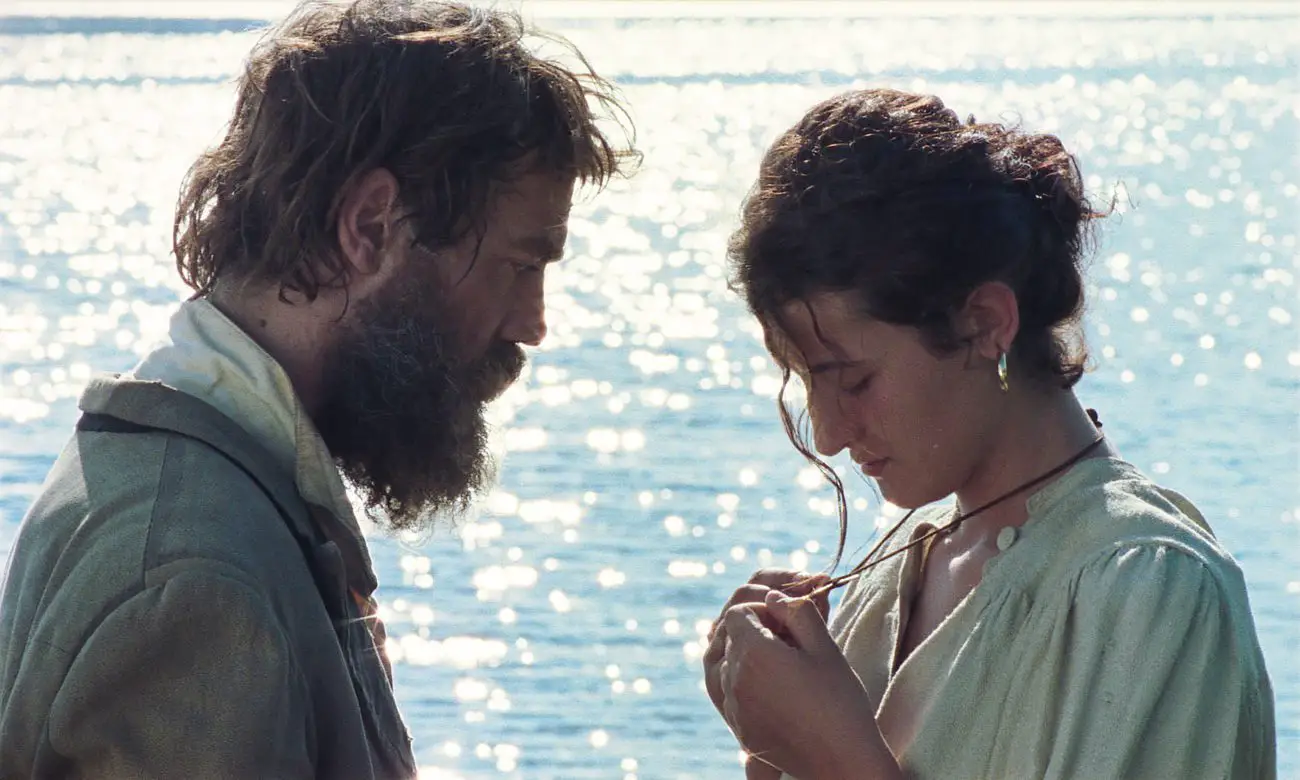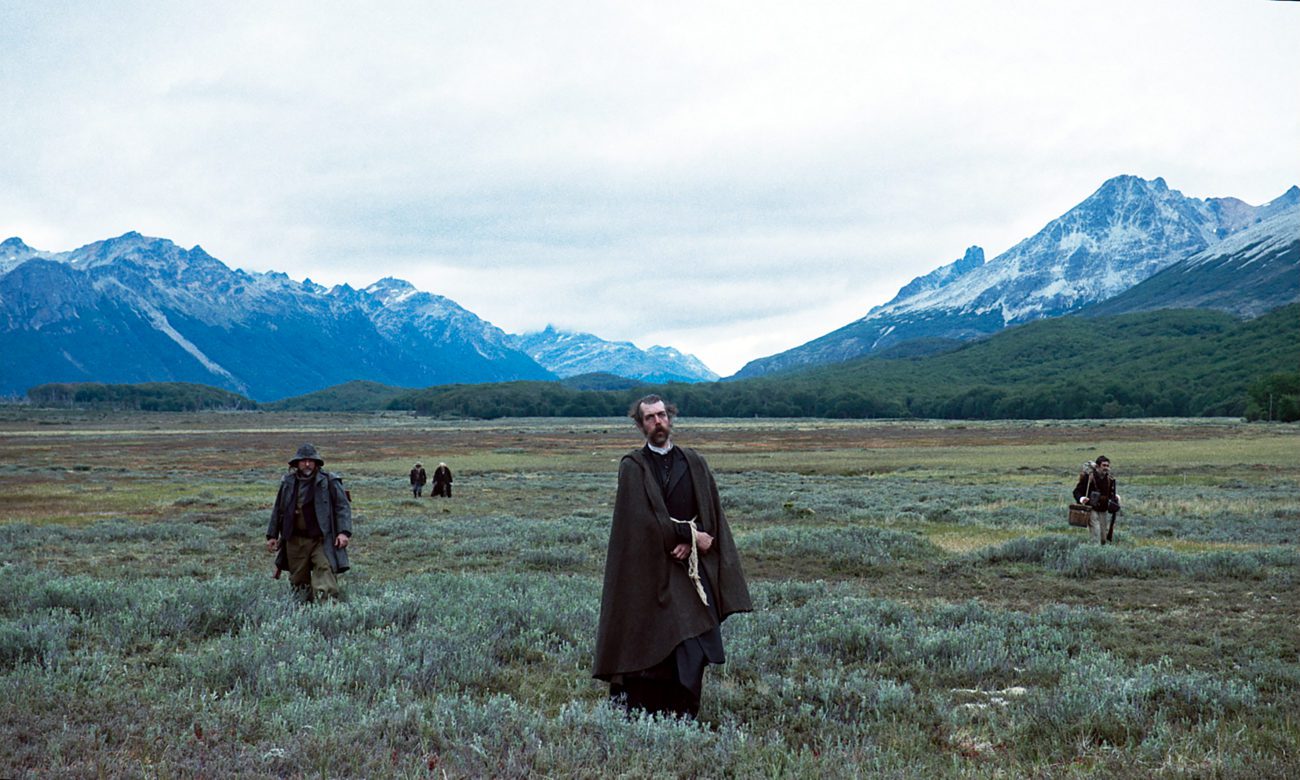What can any viewer reasonably expect from a film titled—in its loose English translation from Re Granchio—The Tale of King Crab? Well, there is a tale, one told in an Italian village, and there is a king crab. And so much, much more. Its quirky, mysterious, ambiguous title only hints at the rich, complex narrative that unfolds in the new fictional feature from Italian co-director-writers Alessio Rigo de Righi and Matteo Zoppis. Enigmatic and allusive, The Tale of King Crab is one for the ages.
The tale it tells is not really of a “King Crab” but of one Luciano, whom contemporary Italians know—and discuss—by many labels: lover, saint, outcast, drunk, murderer. Even today, more than a century later, his legend still vexes a group of elderly hunters and farmers in the village of Vejano, where the film’s narrative begins. They recall the days when their own oral stories, and not television, was the means of preserving a shared culture, and offer up their version of “The Tale of King Crab,” a legend told in two chapters.
In the first, titled “The Saint Orsio Misdeed,” Luciano (Gabriele Silli), prone to drink and conflict, wanders a remote village in Tuscia. There’s bad blood between him and the region’s prince (Enzo Cucchi), and Luciano batters through a gateway locked by the prince’s decree. But Luciano’s rash action has regrettable consequences for the strong-willed, unafraid Emma (Maria Alexandra Lungu), with whom he has fallen in love—and who pays the price for her lover’s folly. Enraged, Luciano plots a further vendetta against the prince’s regime, but it’s a massive failure.

The second chapter takes Luciano to “The Asshole of the World”—far asea to the Patagonian region of Argentina, where he is exiled for his crimes. There, Luciano’s quest takes shape from a priest’s final words, an identity theft, and the pursuit of a mystical treasure reportedly buried in Ushiaia, to which, according to the dead priest, a crab will show him the way. Hence “the tale” of “king crab.”
To summarize the plot this way is, I suppose, to do it some small offense. But it should suggest the varying registers and tropes that define this supremely weird film. Its first half is that of Arthurian romance, a challenge to the criminal rule of order—if an inept and drunken one. Its second half is reminiscent of the modern Western, a search for riches like that of Treasure of the Sierra Madre, over the rocky terrain of Tierra del Fuego in a pursuit of gold made feverish by harsh conditions and unscrupulous antagonists both.

Throughout, Gabriele Silli is mesmerizing as Luciano, protagonist of legend whose exploits register more than a century later. His piercing blue eyes dart through an unkempt mop of gnarly hair and mottled beard, weeks’ worth of dust and dirt creasing the lines of his face. Despite the character’s penchant for drink and incompetence at revenge, Silli makes Luciano an endearing, complex, and cursed character. In the tradition of Italian Neorealism, Silli is not at all a trained actor but an artist friend of the directors from from Rome who was cast first for his face and learned Spanish for his part. Given that he is onscreen for nearly every second of the film, Silli’s performance is especially impressive.
The band of village elders are nonprofessional actors, too, and the source of the story. Co-writer-directors de Righi and Zoppis had worked with some of them on a prior documentary and were told the legend of Luciano. Intrigued, they researched 19th-century records in pursuit of a “real” Luciano. The film evolved towards its fictional, mythical approach as they worked with the local storytellers to flesh out the legend with cinematic detail.
The result is a curious, fascinating amalgam of styles and movements. The casting of locals in minor roles and even the protagonist—an outsider, from Rome, someone who did not “fit in” with the Tuscian surroundings—borrows from Neorealism. Director of photography Simone D’Arcangelo’s richly abundant cinematography, all medium lens and natural lighting, evokes late-period Buñuel, as do some of the film’s more surrealist moments. Questioning religious authority? Bergman. Cross-continental allegory? Pasolini. Anthropological folly? Herzog. Long-take minimalistic slow cinema? Antonioni. Subverting genre tropes? Jodorowsky.
The directors themselves cite Monte Hellman, Mikhaïl Kalatozov, and Akira Kurosawa as influences, but ultimately, The Tale of King Crab is both unquestionably arthouse cinema in the auteurist tradition and sui generis—influenced by many but closely resembling nothing else. For a decade or so, de Righi and Zoppis have filmed their discussions with the local Vejanos, resulting in the nonfiction films Belva Nera and Il Solengo, but in The Tale of King Crab their collaborations have yielded a film that is fictional, fantastical, and yet simultaneously rooted in the loose reality of local legend.
I imagine everyone who seeks out a film like The Tale of King Crab is invested in the future of arthouse and auteurist cinema. As audiences make their way, slowly and cautiously, back to screenings and their local theaters, let’s hope there remains room not just for blockbuster and franchise fare but this kind of thought-provoking, highly stylized, and brilliant moviemaking. Enchanting and upsetting, oblique and creative, tender and touching, The Tale of King Crab bodes well for filmmaking that willingly, brashly breaks down locked gates and pursues its passions.



